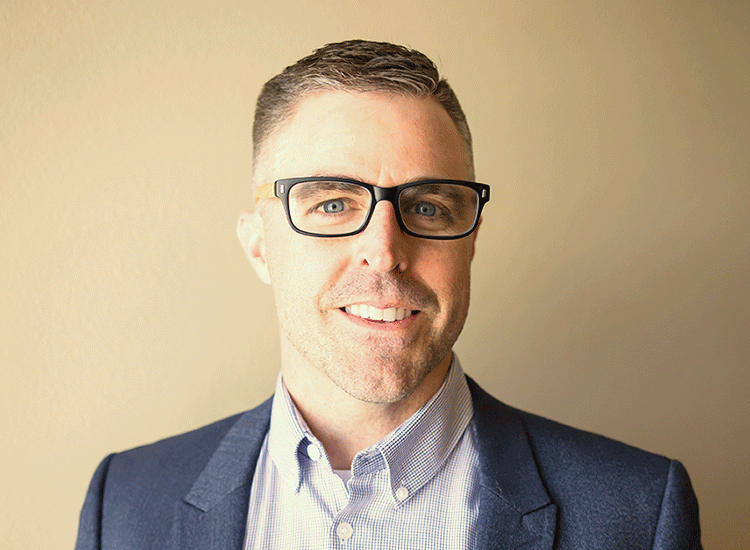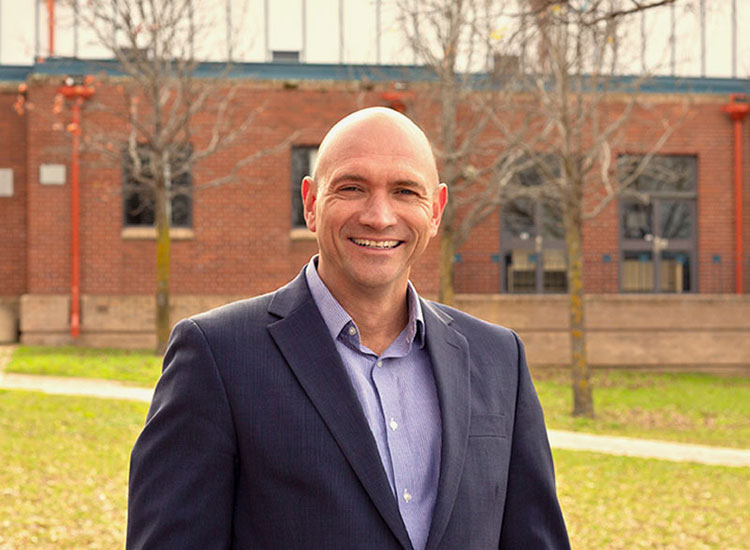Adam Hawk
Executive Coach, Leadership & Management Consultant, Resources for Leading
Denver, Colorado
Programs: Design Thinking: Creating Better Customer Experiences (in person); Advanced Business Strategy: Gaining a Competitive Edge (online); Creative Thinking: Innovative Solutions to Complex Challenges (online).
…I use the models and frameworks I learned, every single one of them, nearly every day to help leaders and teams take their thinking to a more advanced level for themselves and for their organization.
How would you summarize your experience at Harvard Professional Development Programs?
The three programs were all very different but all excellent. The experience of taking a Harvard program in person was fantastic and the instructors for all three programs were amazing. If I could have taken all three in person, I would have. It can be difficult to replicate the collaborative interactive experience. That being said, I made better connections from the two online programs. I’ve stayed in touch with the instructors for both Advanced Business Strategy and Creative Thinking outside of the program. I think that’s what makes the Harvard experience truly unique: you don’t get access to such a high caliber of instructors at such a low price point anywhere else.
What motivated you to choose these specific programs?
All three programs were very topical for me. I had been doing a lot of reading around design thinking and wanted to explore that space in a workshop-type setting. So the Design Thinking program was the first one I took. I was impressed with how easy the program was to access. I just had to sign up and go to it. So I landed at Harvard and loved it, which inspired me to look for additional programs.
I work in both management consulting and executive coaching. I work primarily with business leaders from small- and medium-sized businesses, but some very large businesses as well. I love learning new information. In all three of these programs, I walked away with a framework or tools that I could implement with the people I work with.
I go to the program list every couple months to look at what I’m going to do next. Some of the programs cover areas I’m already working on, but some look forward to topics I know I’ll be covering with my clients or teams that I want to get ahead of. These programs are great accelerators in that way.
What are some of the key takeaways from one or all of the programs that you’ve used in the course of your consulting?
Design Thinking and Creative Thinking are very much mindset programs with tools and applications. I’ve used those tools to help me think through how I can guide my clients — including individuals, executives, and teams — into more of a design-centered and innovative mindset. They helped me define the type of thinking that we need to move into that kind of mindset.
Both of those programs did a really good job of demonstrating the type of thought-based frameworks that are required to move through organizational design, planning, execution, and growth. They also showed what it takes to help people implement and practice those four stages of thought for creative problem-solving. That framework—that way of thinking and asking questions — accounts for the human part of brainstorming and creative innovation.
I began using these frameworks immediately. They’ve quickly become part of the work that I do and the language that I use. I’ll use Anne [Manning] and Susan [Robertson]‘s Creative Thinking program as an example. They use the foresight model of clarifier, ideator, developer, and implementer and apply it to problem-solving. This model has been extremely helpful in guiding teams toward understanding different stages of working through problems. It’s also been very helpful in terms of thinking through the different ways of thinking, the different styles and personality, that all impact innovation and problem-solving.
It’s safe to say that I use the models and frameworks I learned, every single one of them, nearly every day to help leaders and teams take their thinking to a more advanced level for themselves and for their organization.
In Advanced Business Strategy, John [Fay], who is fantastic by the way, went through 15 different frameworks and models. They’ve all been very helpful for evaluating a business, for working with a new client. They’ve helped me evaluate the different stages of business and where they are relative to their competition and their industry. And that’s helped me understand where they can affect the most change.
Working with executives or executive teams, we constantly talk about strategy. Where are we going? How do we grow this? How do we navigate this issue? And how do we get things done in the organization? How do we solve problems?
All three of these programs offered something to answer those questions. For established businesses that have been around for a long time, design thinking is great for shaking yourself out of old patterns of thinking and solving problems in different ways. Creative thinking offered frameworks and brainstorming tools to break out of comfortable ways of thinking, to help established organizations do things differently.
When you couple that type of innovative thinking with thinking strategically about where an organization is and where we want it to go: that’s a very powerful way for leaders to look broadly across not just their business and their function, but across their industry and their competition.
How have these programs benefited your personal career development?
These professional development programs have really helped keep me—my thinking and my learning—ahead of where I need to be to drive ongoing value for the leaders and the organizations I work with. They’ve offered new resources, new people to advance my learning. And that has enhanced the value that I can offer to my clients.
Did the programs offer networking opportunities?
The programs have led to a couple of different networking opportunities.
Anne and Susan started an online innovation group from their own network. Some participants came out of the Creative Thinking program; others they’ve met in different forums they’re active in. This group keeps in touch and have met more formally (online) three or four times in the last year.
All of the instructors I met at these programs have been extremely accessible, which has definitely been a highlight of my experience at Harvard. I’ve talked and met with Anne and Susan multiple times on different calls outside the innovation group, and have invited them to speak with a few of my clients, which has been wonderful. John also offered a follow up, which I still need to take advantage of.
Do you have any advice or tips for people who are looking to get the most out of a professional development program?
Engage with your instructors as much as you can. They are there to help you think through content that’s interesting to you and to address anything (program-appropriate) that’s on your mind. They’re truly fantastic.
Actively participate during the program as well. Talk in the classroom. Ask your questions.
I found all the programs to be composed of really engaging and accessible people. Sure, you’ll get something out of it if you just sit and listen. But you’ll get a lot more if you actively engage in the conversation.
Describe your experience at Harvard Professional Development Programs in one word.
Fantastic, engaging, and highly accessible.
**Written by Mary Sharp Emerson, Digital Content Producer, Harvard Division of Continuing Education, based on an interview with Adam Hawk.



